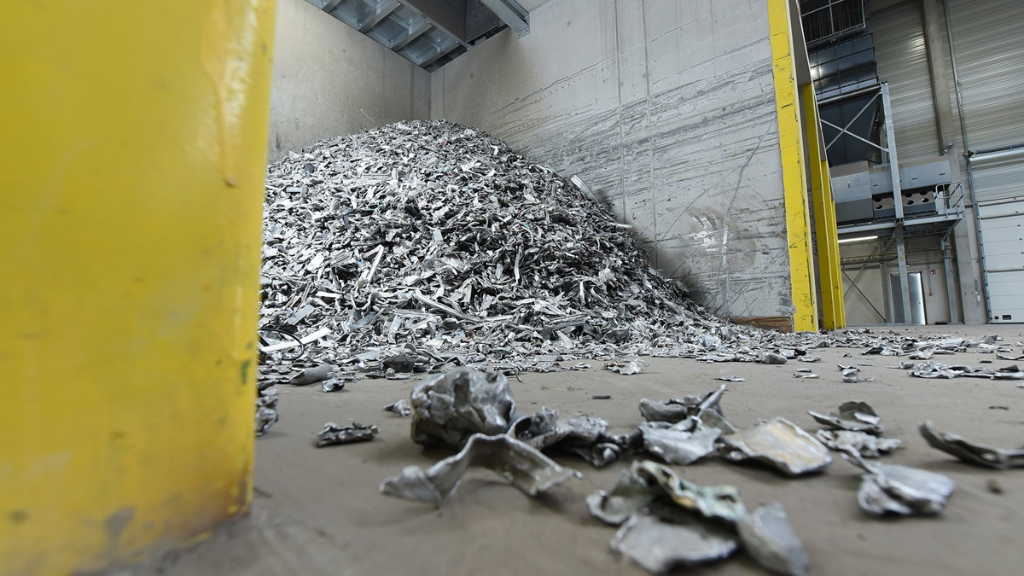by Scott Giett, Tom Stessi, Calvin Tatum and Mike Vasquez
Depending on your threshold for pain, here are three words no recycling or waste facility manager likely wants to hear: “The baler’s down.” The cause, in many instances, is something that’s highly avoidable: skipping or delaying the recommended maintenance procedures on the baler’s wire-tying system.
The result is a machine that cost many hundreds of thousands of dollars is idle, a facility that employs a half-dozen or hundreds of employees is effectively shut down and the income stream comes to a screeching halt because bales can’t be produced and shipped.
Depending on a facility’s capacity, downtime can range from $500 to several thousand dollars per hour. The bottom line is the number of bales produced per day. And the wire tie component – a device that costs roughly between $25,000 and $30,000 – can have a significant impact on that bottom line. But only if you let it.
Life expectancy
How long should a wire-tying device last? Our experience shows that the life expectancy is typically around 10 years. We’ve seen some that have exceeded 20 years – a few approach 30. But the lifetime depends on several factors.
One, of course, is the number of bales produced per day. A machine that produces five to six bales per day, versus one that produces in excess of 200, should have a comparatively long life. Another is cleanliness. A machine operating in a relatively dry, clean, indoor environment versus one in a damp, dirty, outdoor environment should also provide its owner with years of operations.
Maintenance is key
Everyone involved with a given machine should be aware of the importance of maintenance. The person who buys the machine wants it to be robust and durable, because the environment it is used in is less than “delicate.” The facility manager wants it to run consistently and safely. It needs to be sturdy and easy to work on. But both parties should understand – before the contract is signed or the first cycle is run – that no wire-tying machine or baler will deliver the performance they expect without regularly scheduled maintenance. Unfortunately, this is often overlooked once production starts.
The operator knows that it’s his job to keep the machine running, and his expertise depends on his training. Often, an experienced operator may know something is wrong but hesitates to report it because the immediate supervisor doesn’t want to hear bad news or excuses – or, the operator is afraid that the machine may be shut down and he may have to go home until the machine is up and running again. But that’s where another key word comes into play: “training.”
But the bottom line is production. It’s important to keep producing bales. After all, that’s how a company makes a profit. Maintenance is often a secondary thought. It’s easy to think you’ll “get around to it.” But in too many instances, “getting around to it” doesn’t happen often enough. And that leads to lost production when the machine shuts down.
Keeping it regular
It’s true that a piece of machinery can run for an extended period of time without maintenance, but that’s a bit of a fool’s paradise. The user doesn’t have to think about “if” the machine will break down; he should think about “when” it’s going to break down. After all, you’re running metal-on-metal. Parts will wear, but a good understanding of the wire tie system will enable a facility to identify “wear” parts and remove, inspect and replace them as necessary.
The recession has played a part in this conundrum. As staffs are reduced and budgets are tightened, people are taking on multiple jobs within a plant. Maintenance, in many cases, has fallen by the wayside. Dedicated maintenance staffs, once a way of life in some larger facilities, have become an endangered species.
Neglecting regular maintenance to achieve short term gain often brings long-term disaster. We can’t say it enough: establish a regular maintenance program and stick to it.
Take a system out of service for even a few minutes a day for cleaning and a visual inspection to make certain things are tight and appear to be in good running order. Make it a priority to schedule preventive maintenance to replace parts at regular intervals. Semi-annual maintenance on the entire baler, such as replacing oil, should be a priority, not an option. This is the same oil that serves the wire tie system. Compare this to changing the oil on your family automobile, and think about the consequences that you’d face if you failed to perform this seemingly minor bit of maintenance.
And with advances in innovation, maintenance is getting easier. Newly introduced wire tie systems, such as the L&P Pinnacle Wire-Tie System, can simplify maintenance by incorporating an easily interchangeable module. Such modules allow operators to safely remove debris and insert replacement modules, effectively replacing 80 percent of the metal-on-metal wear parts in less than five minutes.
Training the operator
Regardless of experience levels, the machine operator is the first line of defense against downtime. Basic troubleshooting skills are a must. The operator can save facilities and owners hours and perhaps days of downtime through proper training on the equipment. It is important that anyone who runs such a system be familiar with not only its operation, but also be trained on the wire tie system.
Manufacturers of the systems should offer training, and owners should take advantage by including the operator in the sessions available. Training enhances an employees’ value to the company as they become the eyes and ears of the wire tie system. This can be a lifesaver in troubleshooting and performing routine maintenance tasks that will pay off long-term by preventing downtime.
It’s understandable that owners and managers concentrate on production, but training is time well invested. A bit of “scheduled downtime” today can help maintain uptime for years to come.



